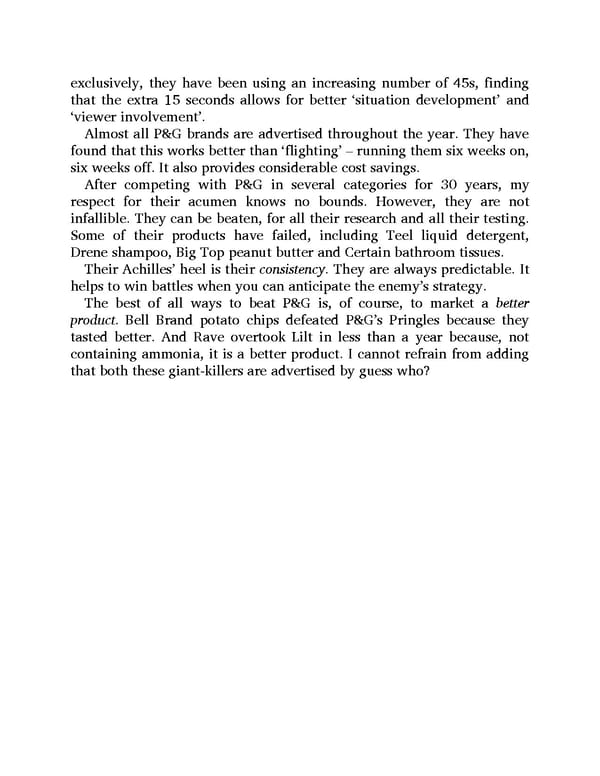exclusively, they have been using an increasing number of 45s, finding that the extra 15 seconds allows for better ‘situation development’ and ‘viewer involvement’. Almost all P&G brands are advertised throughout the year. They have found that this works better than ‘flighting’ – running them six weeks on, six weeks off. It also provides considerable cost savings. After competing with P&G in several categories for 30 years, my respect for their acumen knows no bounds. However, they are not infallible. They can be beaten, for all their research and all their testing. Some of their products have failed, including Teel liquid detergent, Drene shampoo, Big Top peanut butter and Certain bathroom tissues. Their Achilles’ heel is their consistency. They are always predictable. It helps to win battles when you can anticipate the enemy’s strategy. The best of all ways to beat P&G is, of course, to market a better product. Bell Brand potato chips defeated P&G’s Pringles because they tasted better. And Rave overtook Lilt in less than a year because, not containing ammonia, it is a better product. I cannot refrain from adding that both these giant-killers are advertised by guess who?
 Ogilvy on Advertising Page 224 Page 226
Ogilvy on Advertising Page 224 Page 226